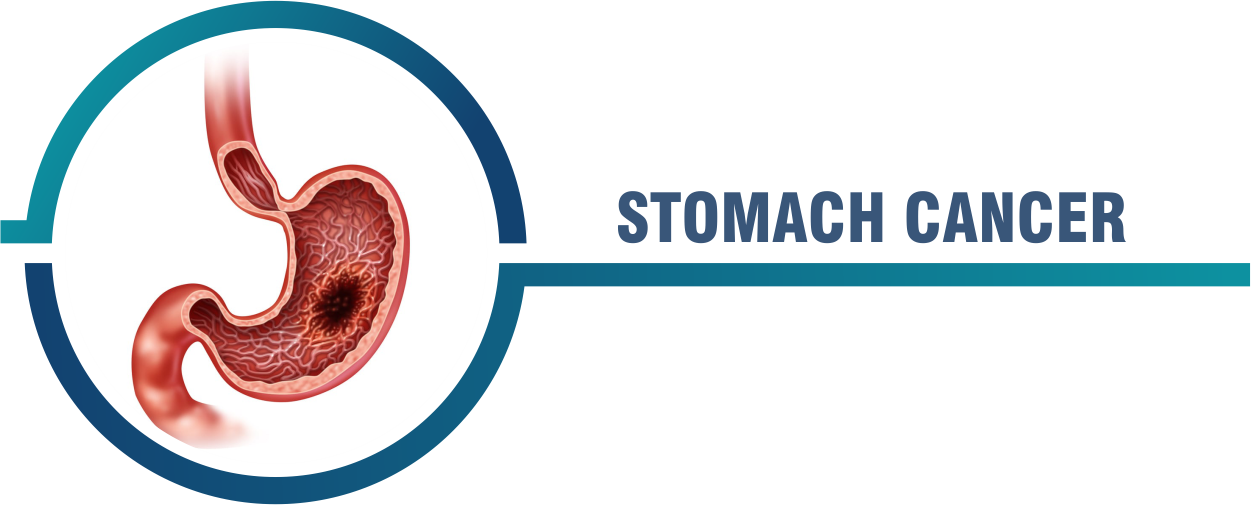
About Stomach Cancer
Stomach Cancer develops when there is an aggregation of malignant cells anywhere in the stomach, which is brought on by precancerous alterations in the stomach lining. In turn, this causes the stomach wall to become a carcinoma or tumor.
Gastric Cancer, also known as stomach cancer, can either remain confined to its original site of origin or spread through the stomach's walls to lymph nodes or other organs like the liver, spleen, colon, and pancreas.
Even the circulation can allow cancer cells to spread to other crucial organs like the lungs. Additionally, after stomach cancer cells pierce through the stomach walls and the abdominal lining, other organs in the abdomen may also be impacted.
It is considered metastatic stomach cancer rather than the cancer of that specific organ when cancer spreads from the stomach to another organ (such as the liver) (example: liver cancer).
Symptoms
- Trouble Swallowing.
- Bloating after eating.
- After consuming little amounts of food, feeling full.
- Heartburn.
- Indigestion.
- Nausea.
- Abdominal pain.
- Inadvertent weight reduction.
Risk Factor
- Sex: Stomach cancer is more common in men than in women.
- Age: Stomach cancer typically affects adults over the age of 70.
- Food preference: People who chose to eat more pickled, salted, or smoked food have a higher risk of stomach cancer. On the other hand, those who eat more fresh fruits and vegetables are at a lower risk.
- Infection: Helicobacter payroll infections can result in stomach ulcers, discomfort, and inflammation. As a result, the risk of stomach cancer has increased.
- Race: Asians, African Americans, and Hispanics have a higher risk of developing stomach cancer.
- Genetics: The disease's family history has also been found.
Investigations
If you see a doctor with a particular set of symptoms that suggest stomach cancer, the doctor will want to do a number of medical tests to determine whether the symptoms are indeed caused by cancer or if there is another problem or disease. The doctor, specifically a gastroenterologist, will initially inquire about your family history. To start with, a number of tests, including one or a combination of the following, can be carried out to identify stomach cancer such as :
- Endoscopy: A tube known as an endoscope is placed into the patient's stomach through the esophagus. Prior to the procedure, the patient is typically given medication to calm them down and numb their throat with the use of an anesthetic. Doctors might examine the patient's stomach with an endoscope to check for any malignant tumors.
- Physical examination: When a patient notices symptoms, a doctor will typically conduct this type of evaluation. The physician looks for symptoms of external stomach cancer, including stomach swelling and inflammation, enlarged lymph nodes, changes in the skin, and changes in eye color.
- X-ray: An X-ray is performed to check for malignant growths in the esophagus and stomach.
- Biopsy: A biopsy of a sample of stomach tissue can often detect the presence of cancer cells. Up until now, it has been the sole reliable method for detecting stomach cancer.
| Procedure | India | Turkey | Dubai |
| (Price in USD) | (Price in USD) | (Price in USD) | |
| Chemotherapy | 2200 | 1500 | 25000 |
| Stomach Cancer Treatment | 7000 | 8000 | 19000 |
Note : This is an approximate cost and may vary depending on various condition of the patient health after physical evaluation.
Treatment Options
Side Effects
- Neutropenia.
- Lymphedema.
- Hair Loss.
- Nausea and Vomiting.
- Problems with Thinking and Remembering Things.
- Cancer Pain.
- Blood Clots (Deep Vein Thrombosis).
- Other Side Effects.
Benefits
Success Rate
If the cancer is in its early stages and is located in the liver, the 5-year survival rate is approximately 65%; however, if it has migrated nearby the stomach and into the lymph nodes, the 5-year survival rate is approximately 30%.
